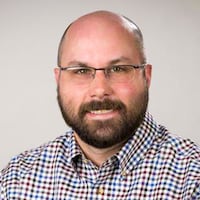Alzheimer’s is among the most serious aging concerns because it has no treatment, cure or prevention, said Eric VanVlymen, executive director of the Alzheimer’s Association Miami Valley Chapter.
“It’s a blessing people are living longer, but then you can hit more road blocks,” he said.
According to the Ohio Department of Aging, Ohio’s population age 60 and older is expected to increase 25 percent by 2020 and almost double by 2040.
The Alzheimer’s Association and its chapters will host a series of Walk to End Alzheimer’s events in the coming weeks. It is the organization’s major fundraising event of the year and can account for up to one-third of donations annually.
Those donations help fuel research at institutions like Wright State and the University of Cincinnati. Officials at both schools said the researching trend is the exploration of non-drug methods to treat Alzheimer’s.
At Wright State, Dr. Govind Bharwani led an effort to create a program called Behavior-Based Ergonomics Therapy, which provides caregivers with a selection of music, videos and other options to help Alzheimer’s and dementia patients stay active with a customized plan. At UC, Dr. Robert Krikorian is examining the effect of natural methods to build memory function, including blueberries.
Those efforts come as experts try to increase awareness for early detection of Alzheimer’s, hoping to improve treatment and quality of life.
“We have clients right now who were diagnosed in their late 40s,” said Steve Olding, communications and public policy director for the Alzheimer’s Association Greater Cincinnati chapter. “It’s a completely different dynamic. It’s tragic for anyone who is diagnosed, but someone in their late 60s or 70s is not dealing with the same situation as someone in the 50s, who is still away from retirement and has kids in high school.”
Main concerns
Efforts to improve life quality for Alzheimer’s patients are part of a push to remove the stigma of the disease. Robert and Sue Shearer moved to their Miami Twp. home last summer from Steubenville after Sue was diagnosed with Alzheimer’s. They said others mentioned the Dayton area as a supportive environment for Alzheimer’s patients.
“If she had a broken arm or something else, people would see it and understand it,” Robert Shearer said of his wife. “For her to tell people she has Alzheimer’s, some people don’t have a good reaction to that.”
Sue Shearer’s message is that she is active and productive after receiving a diagnosis early in the disease’s progression.
“That I’m still a human being,” she said. “I still have sensibilities, and I still love to work with people if I can.”
Officials cite situations like Sue Shearer’s as evidence that earlier detection can help patients continue living a relatively full life. Those efforts will be tested more in the future with an aging population, and officials are working to take steps that prepare the system for care of all kinds of age-related issues.
With Alzheimer’s, care often requires multiple people. According to the Alzheimer’s Association, the number of Alzheimer’s and dementia caregivers in Ohio was 586,878 in 2010. It estimated the cost of the unpaid care was about $8.1 billion.
“That has effects,” said John Ratliff, spokesperson for the Ohio Department of Aging. “They miss work, they call off to be with a family member, and that impacts the workplace. It affects individuals’ economic situations. It’s definitely part of the big picture we’re looking at.”
Research efforts
As director of Nursing Ergonomics and Alzheimer Care at the Nursing Institute of West Central Ohio and co-director of ergonomics at the Wright State College of Engineering and Computer Science, Bharwani began working with St. Leonard Franciscan Living Community on residents’ issues with falling.
As part of his research, Bharwani came to understand that the risk of falling increases when patients wander the facility.
“Behavior problems come from boredom and disengagement,” he said.
He worked with the facility and others, including his daughter, Meena, a consultant, to form the Behavior-Based Ergonomics Therapy. Staff members establish what interests patients have and match music or programming that keeps them engaged. The program has been adopted at facilities in several states, and Bharwani and his associates expect to expand the program to the outside community with next month’s opening of the Memory Resource Center at St. Leonard, where caregivers of any kind, not just facility staff, can go to offer the BBET program.
Elsewhere, at the University of Cincinnati, Krikorian is an associate professor in the department of psychiatry and behavioral neuroscience. He is hoping research focuses more on non-drug treatments. His current studies include researching the effect of blueberries on memory retention or development, and he said there have been positive results.
Krikorian, like officials in all parts of the Alzheimer’s treatment community, stresses that prevention can begin with the simplest aspects of health, like exercise and diet.
“What’s good for the heart is good for the brain,” Krikorian said.
Officials say these efforts will increase with this year’s passage of the National Alzheimer’s Project Act. According to the Alzheimer’s Association, the plan includes $100 million in funding from the government’s fiscal year 2013 budget for research, education and outreach. They hope these efforts increase quality of life for those diagnosed with Alzheimer’s.
“(With Alzheimer’s) everything you do gets more complicated,” said VanVlymen of the Alzheimer’s Association Miami Valley chapter. “That’s what we’re trying to improve.”
About the Author
